Network Security Task: Data Rate, Channel Capacity, and Switching
VerifiedAdded on 2022/11/13
|6
|721
|413
Homework Assignment
AI Summary
This document presents a comprehensive solution to a network security assignment, addressing various aspects of network communication and security. The solution begins by calculating bit rate and channel capacity, explaining their formulas and significance. It then delves into multiplexing and ...
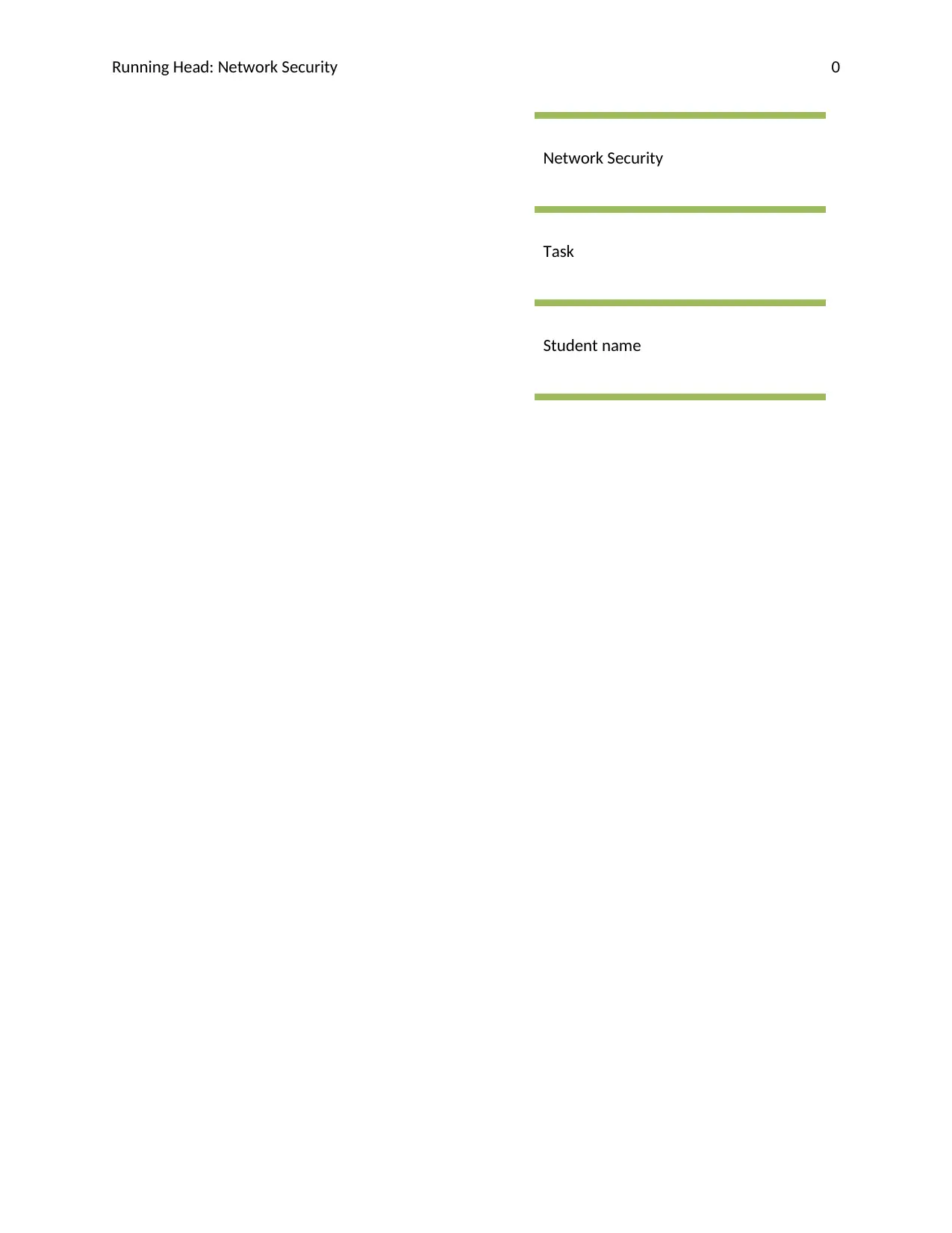
Running Head: Network Security 0
Network Security
Task
Student name
Network Security
Task
Student name
Paraphrase This Document
Need a fresh take? Get an instant paraphrase of this document with our AI Paraphraser
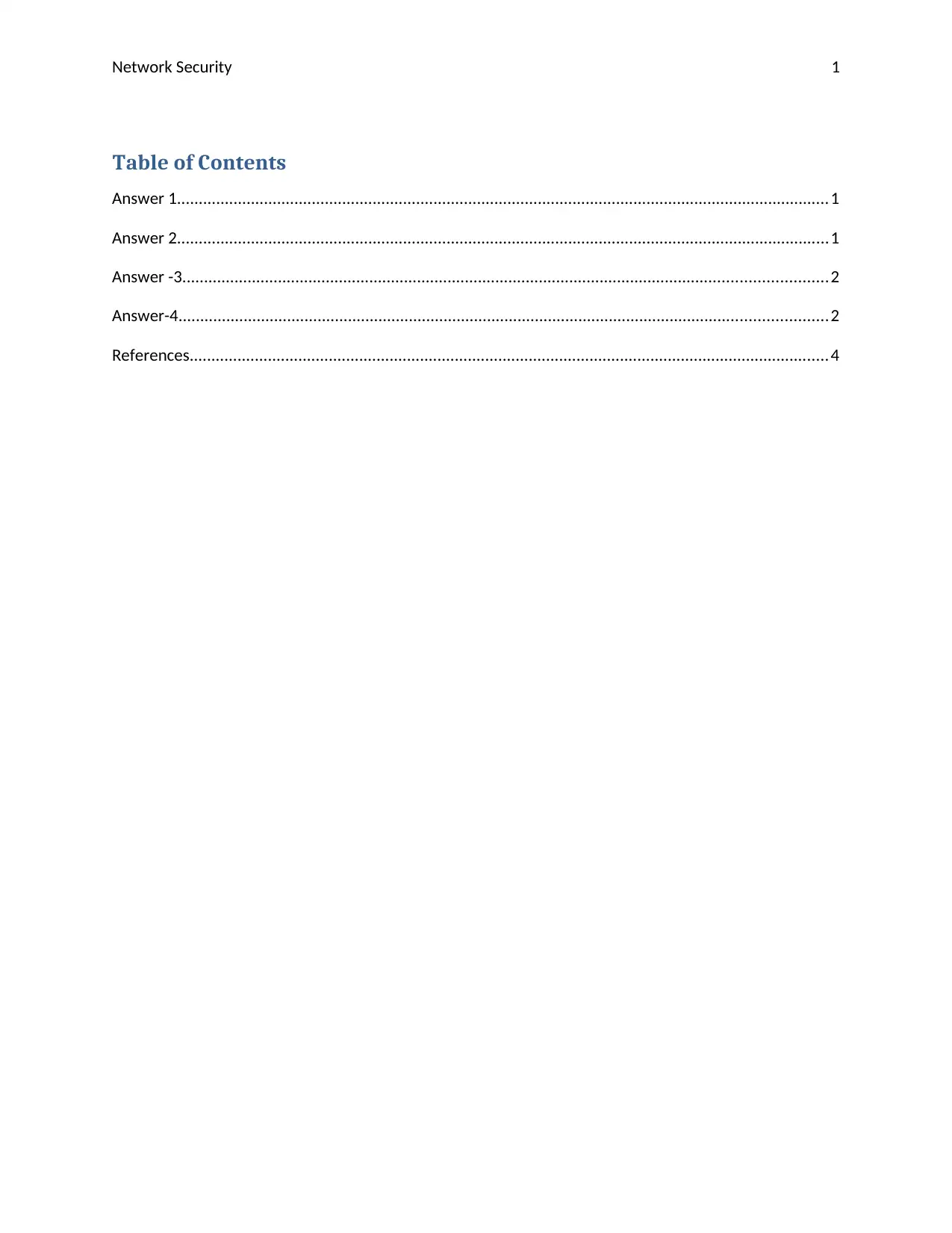
Network Security 1
Table of Contents
Answer 1......................................................................................................................................................1
Answer 2......................................................................................................................................................1
Answer -3....................................................................................................................................................2
Answer-4.....................................................................................................................................................2
References...................................................................................................................................................4
Table of Contents
Answer 1......................................................................................................................................................1
Answer 2......................................................................................................................................................1
Answer -3....................................................................................................................................................2
Answer-4.....................................................................................................................................................2
References...................................................................................................................................................4
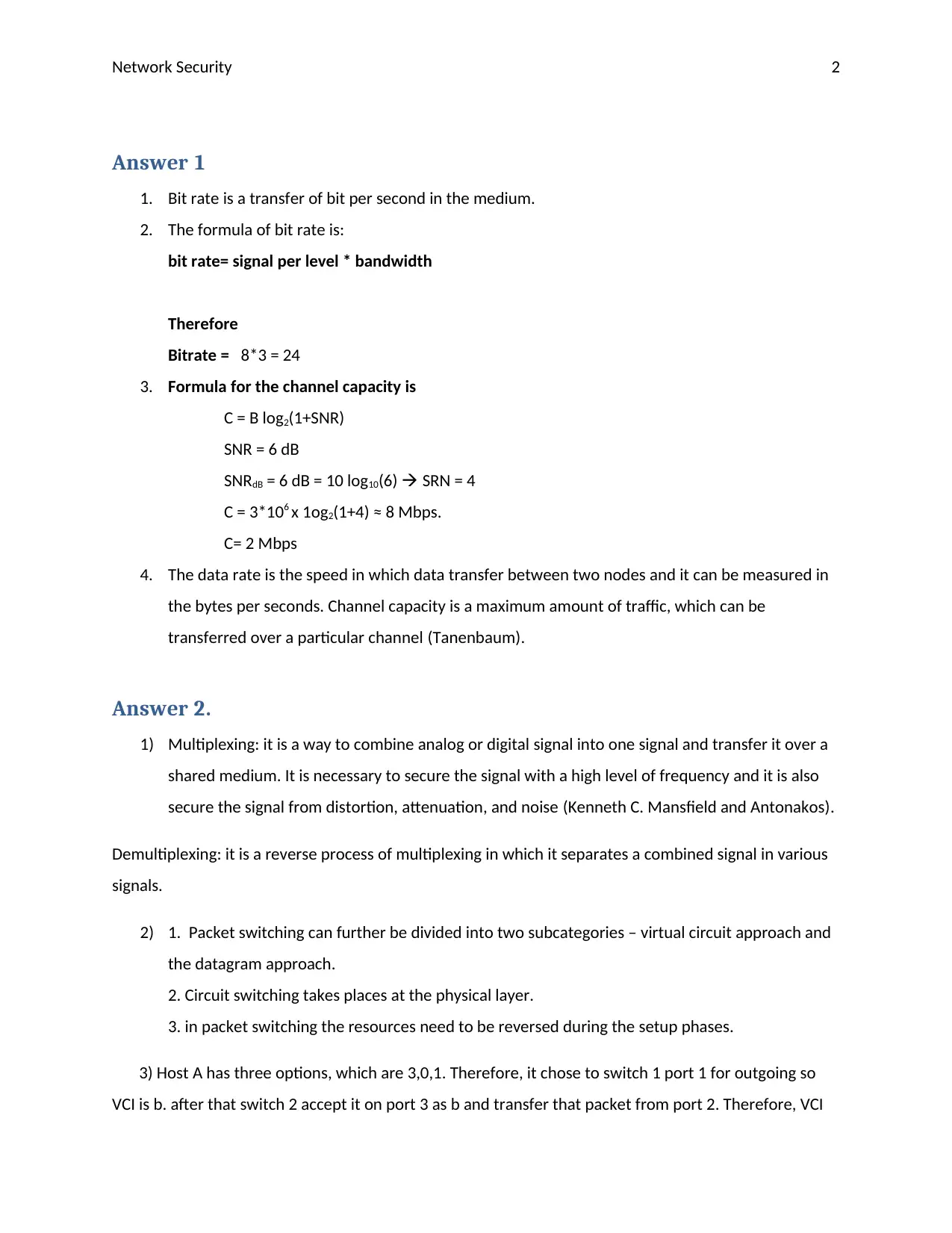
Network Security 2
Answer 1
1. Bit rate is a transfer of bit per second in the medium.
2. The formula of bit rate is:
bit rate= signal per level * bandwidth
Therefore
Bitrate = 8*3 = 24
3. Formula for the channel capacity is
C = B log2(1+SNR)
SNR = 6 dB
SNRdB = 6 dB = 10 log10(6) SRN = 4
C = 3*106 x 1og2(1+4) ≈ 8 Mbps.
C= 2 Mbps
4. The data rate is the speed in which data transfer between two nodes and it can be measured in
the bytes per seconds. Channel capacity is a maximum amount of traffic, which can be
transferred over a particular channel (Tanenbaum).
Answer 2.
1) Multiplexing: it is a way to combine analog or digital signal into one signal and transfer it over a
shared medium. It is necessary to secure the signal with a high level of frequency and it is also
secure the signal from distortion, attenuation, and noise (Kenneth C. Mansfield and Antonakos).
Demultiplexing: it is a reverse process of multiplexing in which it separates a combined signal in various
signals.
2) 1. Packet switching can further be divided into two subcategories – virtual circuit approach and
the datagram approach.
2. Circuit switching takes places at the physical layer.
3. in packet switching the resources need to be reversed during the setup phases.
3) Host A has three options, which are 3,0,1. Therefore, it chose to switch 1 port 1 for outgoing so
VCI is b. after that switch 2 accept it on port 3 as b and transfer that packet from port 2. Therefore, VCI
Answer 1
1. Bit rate is a transfer of bit per second in the medium.
2. The formula of bit rate is:
bit rate= signal per level * bandwidth
Therefore
Bitrate = 8*3 = 24
3. Formula for the channel capacity is
C = B log2(1+SNR)
SNR = 6 dB
SNRdB = 6 dB = 10 log10(6) SRN = 4
C = 3*106 x 1og2(1+4) ≈ 8 Mbps.
C= 2 Mbps
4. The data rate is the speed in which data transfer between two nodes and it can be measured in
the bytes per seconds. Channel capacity is a maximum amount of traffic, which can be
transferred over a particular channel (Tanenbaum).
Answer 2.
1) Multiplexing: it is a way to combine analog or digital signal into one signal and transfer it over a
shared medium. It is necessary to secure the signal with a high level of frequency and it is also
secure the signal from distortion, attenuation, and noise (Kenneth C. Mansfield and Antonakos).
Demultiplexing: it is a reverse process of multiplexing in which it separates a combined signal in various
signals.
2) 1. Packet switching can further be divided into two subcategories – virtual circuit approach and
the datagram approach.
2. Circuit switching takes places at the physical layer.
3. in packet switching the resources need to be reversed during the setup phases.
3) Host A has three options, which are 3,0,1. Therefore, it chose to switch 1 port 1 for outgoing so
VCI is b. after that switch 2 accept it on port 3 as b and transfer that packet from port 2. Therefore, VCI
You're viewing a preview
Unlock full access by subscribing today!
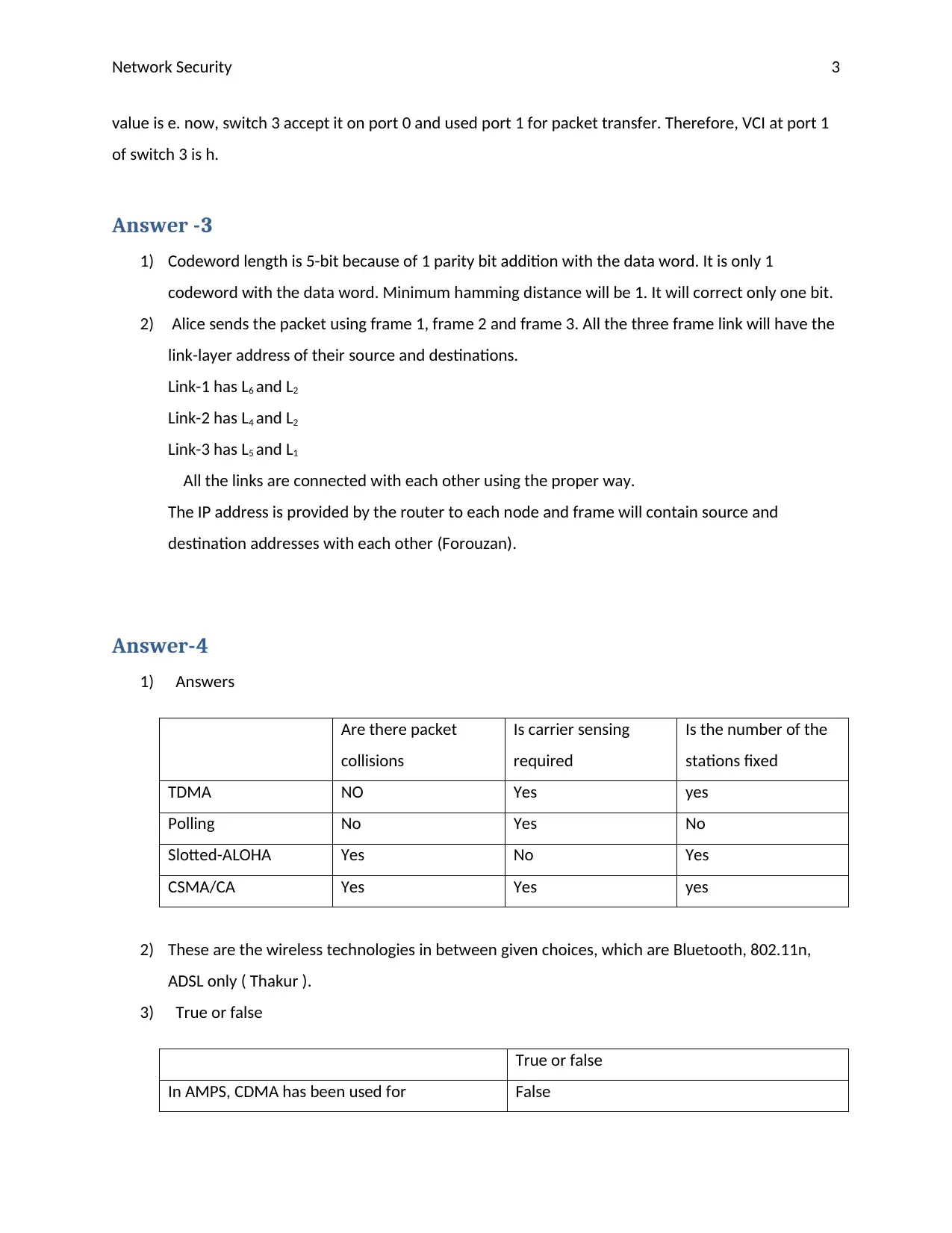
Network Security 3
value is e. now, switch 3 accept it on port 0 and used port 1 for packet transfer. Therefore, VCI at port 1
of switch 3 is h.
Answer -3
1) Codeword length is 5-bit because of 1 parity bit addition with the data word. It is only 1
codeword with the data word. Minimum hamming distance will be 1. It will correct only one bit.
2) Alice sends the packet using frame 1, frame 2 and frame 3. All the three frame link will have the
link-layer address of their source and destinations.
Link-1 has L6 and L2
Link-2 has L4 and L2
Link-3 has L5 and L1
All the links are connected with each other using the proper way.
The IP address is provided by the router to each node and frame will contain source and
destination addresses with each other (Forouzan).
Answer-4
1) Answers
Are there packet
collisions
Is carrier sensing
required
Is the number of the
stations fixed
TDMA NO Yes yes
Polling No Yes No
Slotted-ALOHA Yes No Yes
CSMA/CA Yes Yes yes
2) These are the wireless technologies in between given choices, which are Bluetooth, 802.11n,
ADSL only ( Thakur ).
3) True or false
True or false
In AMPS, CDMA has been used for False
value is e. now, switch 3 accept it on port 0 and used port 1 for packet transfer. Therefore, VCI at port 1
of switch 3 is h.
Answer -3
1) Codeword length is 5-bit because of 1 parity bit addition with the data word. It is only 1
codeword with the data word. Minimum hamming distance will be 1. It will correct only one bit.
2) Alice sends the packet using frame 1, frame 2 and frame 3. All the three frame link will have the
link-layer address of their source and destinations.
Link-1 has L6 and L2
Link-2 has L4 and L2
Link-3 has L5 and L1
All the links are connected with each other using the proper way.
The IP address is provided by the router to each node and frame will contain source and
destination addresses with each other (Forouzan).
Answer-4
1) Answers
Are there packet
collisions
Is carrier sensing
required
Is the number of the
stations fixed
TDMA NO Yes yes
Polling No Yes No
Slotted-ALOHA Yes No Yes
CSMA/CA Yes Yes yes
2) These are the wireless technologies in between given choices, which are Bluetooth, 802.11n,
ADSL only ( Thakur ).
3) True or false
True or false
In AMPS, CDMA has been used for False
Paraphrase This Document
Need a fresh take? Get an instant paraphrase of this document with our AI Paraphraser
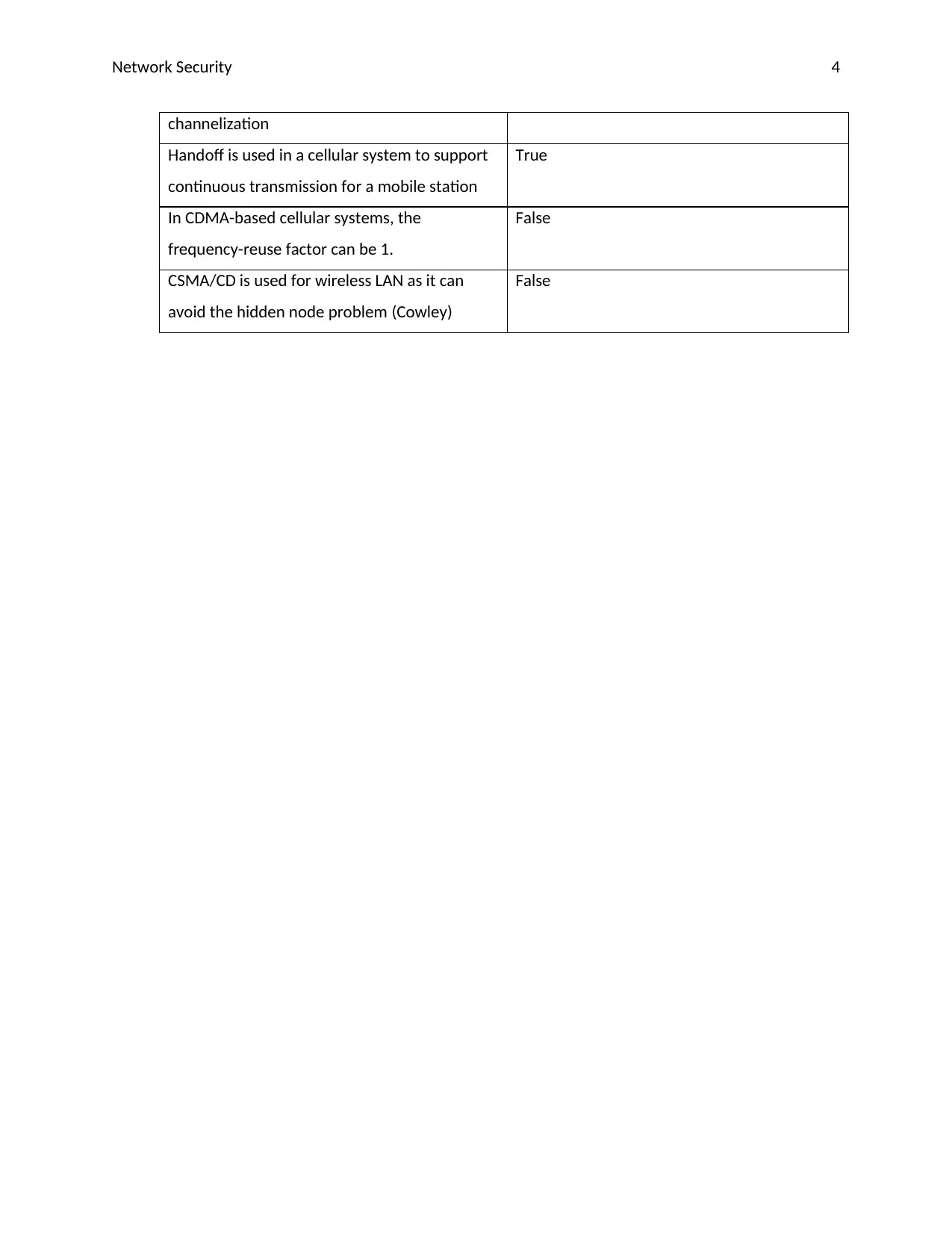
Network Security 4
channelization
Handoff is used in a cellular system to support
continuous transmission for a mobile station
True
In CDMA-based cellular systems, the
frequency-reuse factor can be 1.
False
CSMA/CD is used for wireless LAN as it can
avoid the hidden node problem (Cowley)
False
channelization
Handoff is used in a cellular system to support
continuous transmission for a mobile station
True
In CDMA-based cellular systems, the
frequency-reuse factor can be 1.
False
CSMA/CD is used for wireless LAN as it can
avoid the hidden node problem (Cowley)
False
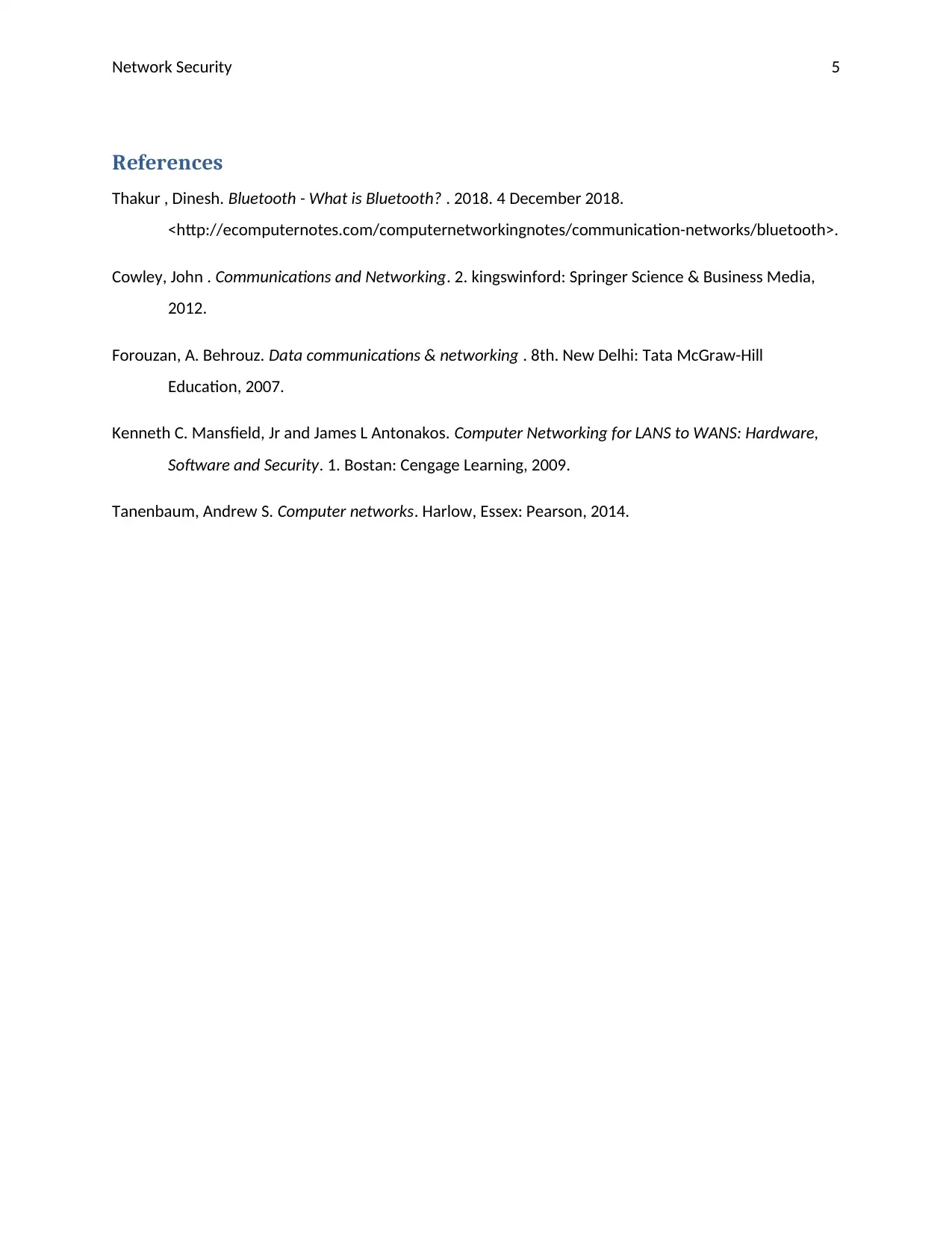
Network Security 5
References
Thakur , Dinesh. Bluetooth - What is Bluetooth? . 2018. 4 December 2018.
<http://ecomputernotes.com/computernetworkingnotes/communication-networks/bluetooth>.
Cowley, John . Communications and Networking. 2. kingswinford: Springer Science & Business Media,
2012.
Forouzan, A. Behrouz. Data communications & networking . 8th. New Delhi: Tata McGraw-Hill
Education, 2007.
Kenneth C. Mansfield, Jr and James L Antonakos. Computer Networking for LANS to WANS: Hardware,
Software and Security. 1. Bostan: Cengage Learning, 2009.
Tanenbaum, Andrew S. Computer networks. Harlow, Essex: Pearson, 2014.
References
Thakur , Dinesh. Bluetooth - What is Bluetooth? . 2018. 4 December 2018.
<http://ecomputernotes.com/computernetworkingnotes/communication-networks/bluetooth>.
Cowley, John . Communications and Networking. 2. kingswinford: Springer Science & Business Media,
2012.
Forouzan, A. Behrouz. Data communications & networking . 8th. New Delhi: Tata McGraw-Hill
Education, 2007.
Kenneth C. Mansfield, Jr and James L Antonakos. Computer Networking for LANS to WANS: Hardware,
Software and Security. 1. Bostan: Cengage Learning, 2009.
Tanenbaum, Andrew S. Computer networks. Harlow, Essex: Pearson, 2014.
You're viewing a preview
Unlock full access by subscribing today!
1 out of 6
Related Documents
Your All-in-One AI-Powered Toolkit for Academic Success.
+13062052269
info@desklib.com
Available 24*7 on WhatsApp / Email
![[object Object]](/_next/static/media/star-bottom.7253800d.svg)
Unlock your academic potential
© 2024 | Zucol Services PVT LTD | All rights reserved.





